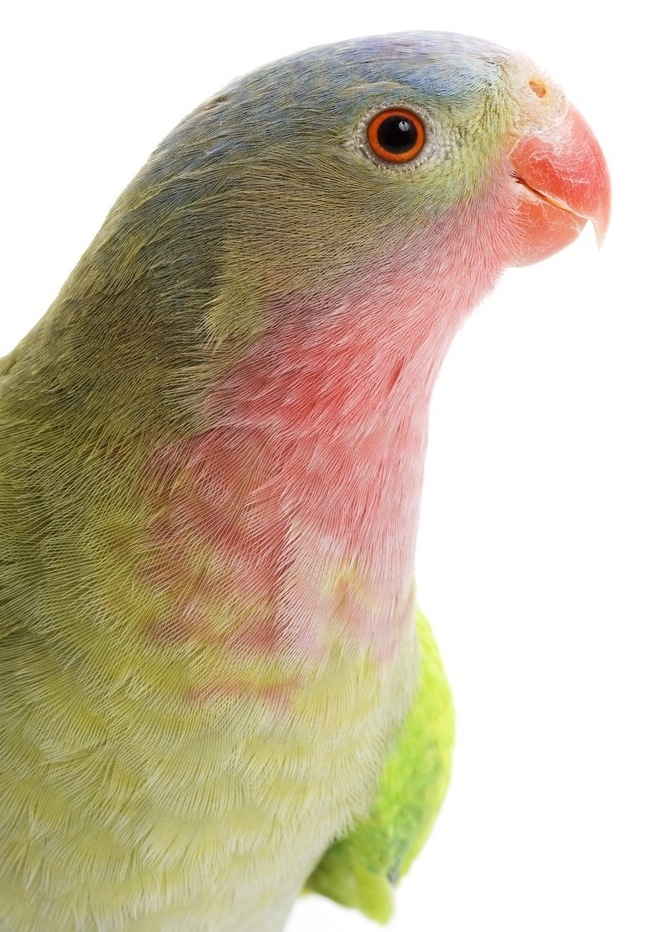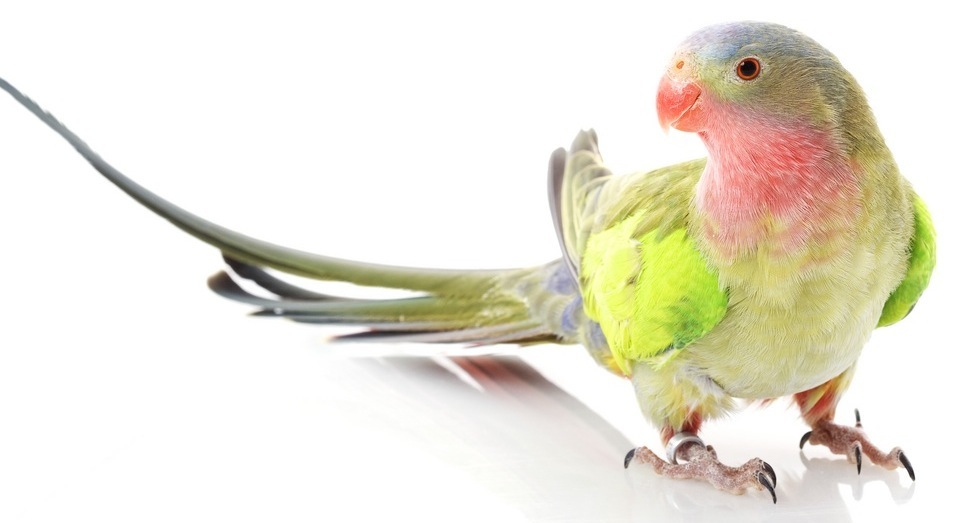Princess of Wales's parakeet (Princess parrot) - Polytelis alexandrae

Their soft, contrasting pastel colours have led to these parakeets becoming long-standing avicultural favourites. They were first bred in aviary surroundings in 1912 and are now well-established in collections around the world. This species is known under quite a wide variety of names, including the princess parrot, rose-throated parakeet and spinifex parrot, with this particular description referring to a type of grass that is common through its natural habitat.
Pale blue colouration on the crown of the head contrasts with the pink plumage evident on the throat and upper breast, while the lower part of the body is yellowish-green. The wings are a bright, apple green, and it is possible to recognise a true pair by differences in their plumage, with hens having paler rumps than cock birds.
Cocks also have a more brightly coloured bill, and an unusual feature on their flight feathers is the presence of a projection called a spatule, which can be present on the third primary feather of each wing, although it is quite easily lost.
In common with other parakeets, this species has a long tail, and averages up to 40cm (16in) overall. Active by nature, Princess of Wales’s parakeets need a flight that is at least 3.65m (12ft) in length. Pairs will normally breed readily in these surroundings during the summer months, usually preferring a deep, “grandfather clock” style of nest box.
Unfortunately, some hens do have a tendency to eat their eggs soon after laying them. Placing plastic dummy eggs, as sold for canaries, in their nest box can serve to cure them of this habit though. Their clutch size is typically between 4-6 eggs in total, and the incubation period lasts about 19 days. The chicks should leave the nest once they are around six weeks old. They may then live for 20 years or more, and can be visually sexed by the time they are about 18 months old.
Feeding is straightforward, with a diet of mixed millets, groats (dehusked oats), plain canary seed and sunflower seed suiting them well. This needs to be supplemented with greenstuff and a little fruit, such as sweet apple, that has been sprinkled with a special avian supplement on a regular basis.Princess of Wales's parakeet and Princess parrot

These parakeets were named after Process Alexandra by the explorer and naturalist John Gould when he discovered them in central Australia in 1863. They may actually be quite scarce in the wild and are certainly nomadic, flying long distances over the continent’s arid interior in search of food and water. They have been recorded from Western Australia up to Northern Territory and can range down to inland areas of South Australia.
Aside from the normal green variety, two primary colour mutations have been developed by breeders. There is the blue form, plus the lutino, which is bright yellow. When these are combined, the end result can be the pure white albino variant. Although Princess of Wales’s parakeets are generally healthy, they are vulnerable to roundworms, and an avian vet will be able to give you advice about testing and deworming them if necessary.